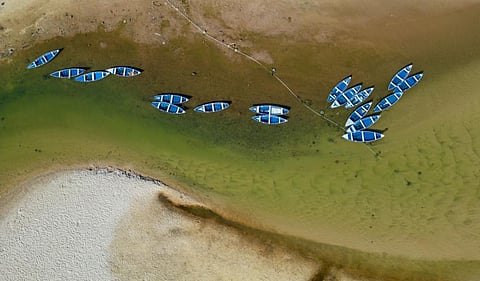Drought in the Amazon: A tragedy announced
The Amazon contains 20 per cent of all freshwater in the world, but there is no water in the taps of most houses in the region at the moment. It is suffering from record severe drought this year which could extend until January, according to a forecast from CEMADEN, the Brazilian government’s Natural Disaster Monitoring and Alert Center.
Several tributaries of the Amazon river in many regions have fallen prey to the drought, with flows (volumes) below the historical average in 102 years. Water level in the main stem is falling by around 13 to 14 centimetres daily, considered below normal according to a bulletin from the Geological Survey of Brazil. The disappearance of rivers and streams has completely transforming the landscape.
Abnormal warming of the Atlantic Ocean has primarily contributed to drying out the region’s rivers. This, combined with El Nino, could exacerbate and prolong the drought in the region.
If the anomalous warming of the Atlantic continues, according to experts, the extreme drought in the Amazon could last until mid-2024.
Human & environmental tragedy
The severe drought affecting the Amazon is producing a human and environmental tragedy in the region — and the situation could become even worse due to a perverse climate combination. The most affected people are those who are most socio-economically vulnerable in the region.
The drought is most severe in the so-called Western Amazon, affecting almost a million people and in the present scenario, the number of municipalities affected by the drought is expected to increase by year’s end, impacting navigation and access to water. Fires are expected to intensify and family agricultural production is expected to suffer heavy losses.
As I live in the middle of the Amazon region, I already observe lack of vegetables and fruits in the local market. Basic food items like cassava (‘the bread of the tropics’) is disappearing from the local market and the prices of food items are soaring every day.
Most communities have been isolated and local governments have declared a natural calamity in the region. In the state of Amazonas, almost all the municipalities have declared calamity. Besides the lack of drinking water and food, the hospitals, schools and whole system of transportation is affected by the drought.
At the same time, we need to consider the wildfires that have been extending into many reserved indigenous territories, destroying flora and fauna. Tonnes of fish are dying due to lack of oxygen in the rivers and lakes of the region.
Large-scale deforestation caused by illegal timber exportation, cattle grazing and extension of soyabean plantations also contributed to the disappearance of many water sources in the region and increasing the adverse effect of the drought.
In Tefé in the Mamirauá Development Reserve region, home to the largest forest reserve in Brazil dedicated to the protection of the Amazon floodplain, hundreds of Amazon river dolphins and fish have died. Teams of researchers, including veterinarians and biologists, attribute this mortality to the lack of oxygen and extreme heat.
The crisis, however, goes far beyond the deaths of dolphins and other loss of biodiversity. There are already records of increased mortality of fish species in the region, including pirarucu (arapaima gigas), which is essential for the food and economy of local populations.
Furthermore, for many experts, the unprecedented tragedy in the Amazon could be considered of what could happen when the Amazon reaches the point of no return. The present process can lead to a desertification of Amazon Forest which can loss its capacity of resilience.
Shaji Thomas is an Indian activist who has spent nearly 3 decades in the Amazon region
Views expressed are the author’s own and don’t necessarily reflect those of Down To Earth


